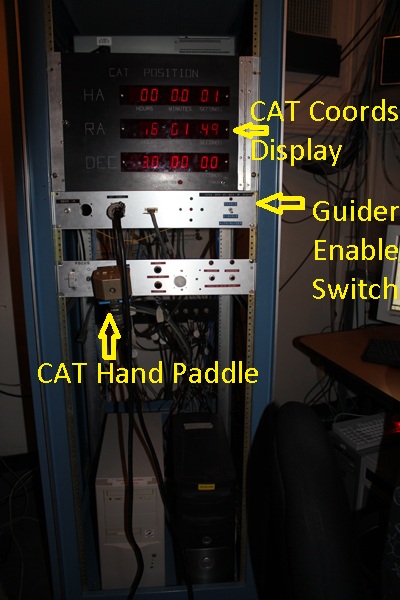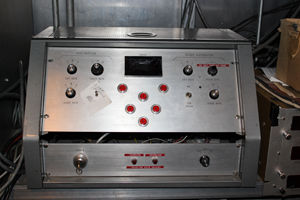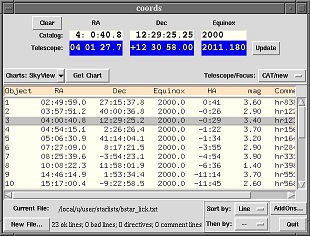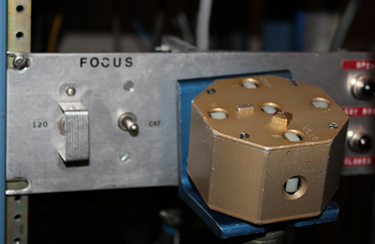Pointing
Under Construction... For now please see your friendly SA. Below is a working in progress. It is not complete nor has it been double checked so again if you have questions see the SA.The CAT telescope is a partially manaul telescope. What this means is that to move the telescope to an object one must push and hold buttons down until they see the desired coordinates on a readout and (hopefully) see the object. First thing you will need to do is turn on tracking. This is accomplised by flipping the toggle switch on the pushbuttom telescope controller up.
Next, there are several software tools
to get you to your object.
The first is a CAT specific coordiantes program (above).
This program allows you to have a star list that can be organized by many different criteria (HA, RA, etc). It also gives you a quick way of bringing up a finder chart.
The most important thing that is does for the observer is to precess the object to that moment, displaying the coordinates where the object will be found using the CAT.
In otherwords it takes the catalogue position (often 2000 coordinates), updates the coordinates for to days time and date, and then applies the CAT telescope's pointing model.

Once the coordinates have been precessed with the CAT Coords program, the observer will then move the telescope using the paddle and the readout until they are at the desired position as displayed on the CAT Coords display or on telcoc (xterm command telcoc).
This will get the object close to the desired bore sight. If the observer is using the Hamilton Spectrograph (or coude room) and you think the object is very close to the guider field then you
might want to do a quick raster scan to see if you can put it on the slit. If not, or the quick raster scan is unsuccessful, then use the FATCAT wide field finder to bring the target into the guider field.
If this is the first target at night it should be a zenith target and the pointing check procedure below should be followed.
Once you have the object on the guider you will need to focus the telescope. This is accomplished by watching the guider while toggling the switch labled FOCUS CAT next to the hand paddle.
Pointing Check
New users please note: The CAT is an observer-operated telescope. All new users must be checked out by a resident astronomer on their first night. Retrurning observers may request a refresher. Please make requests for support on your time application. Direct questions to the Support Astronomers, sa@ucolick.org.


